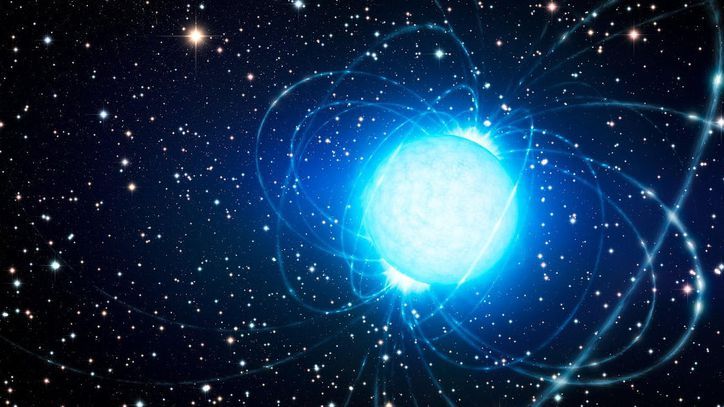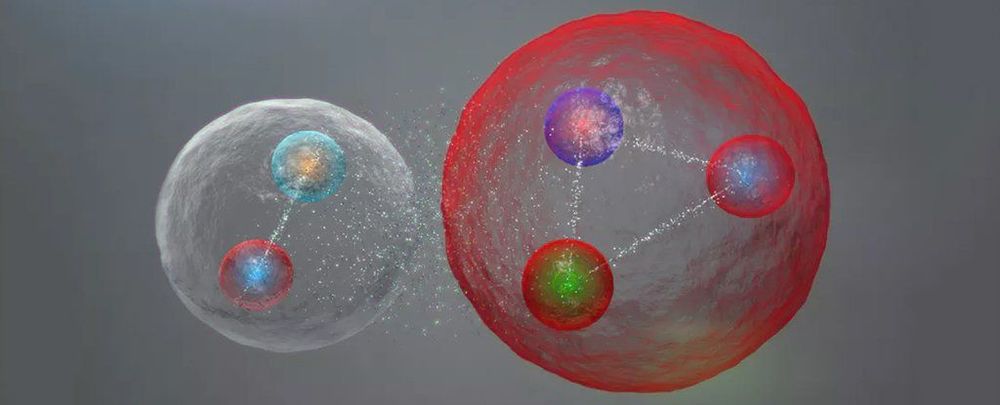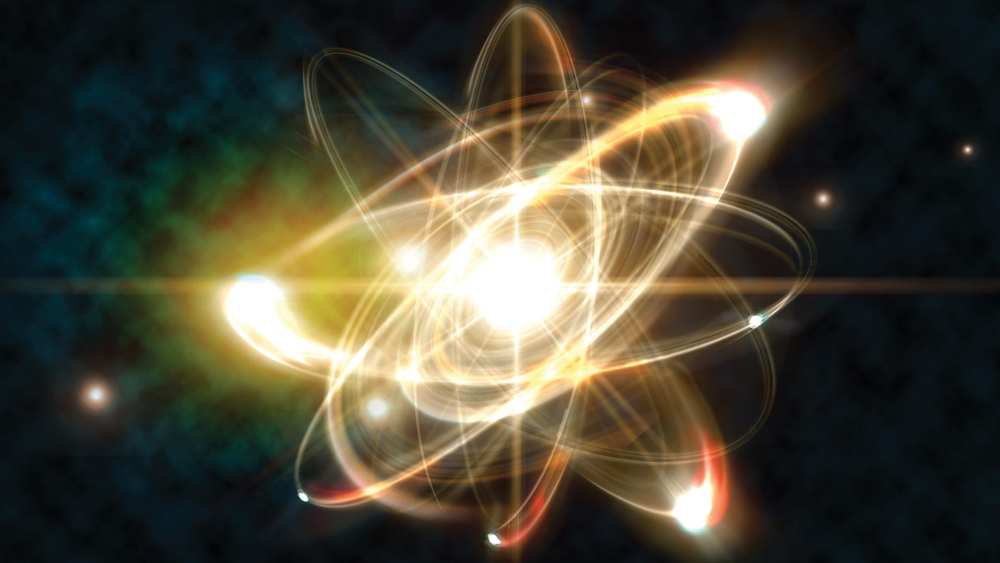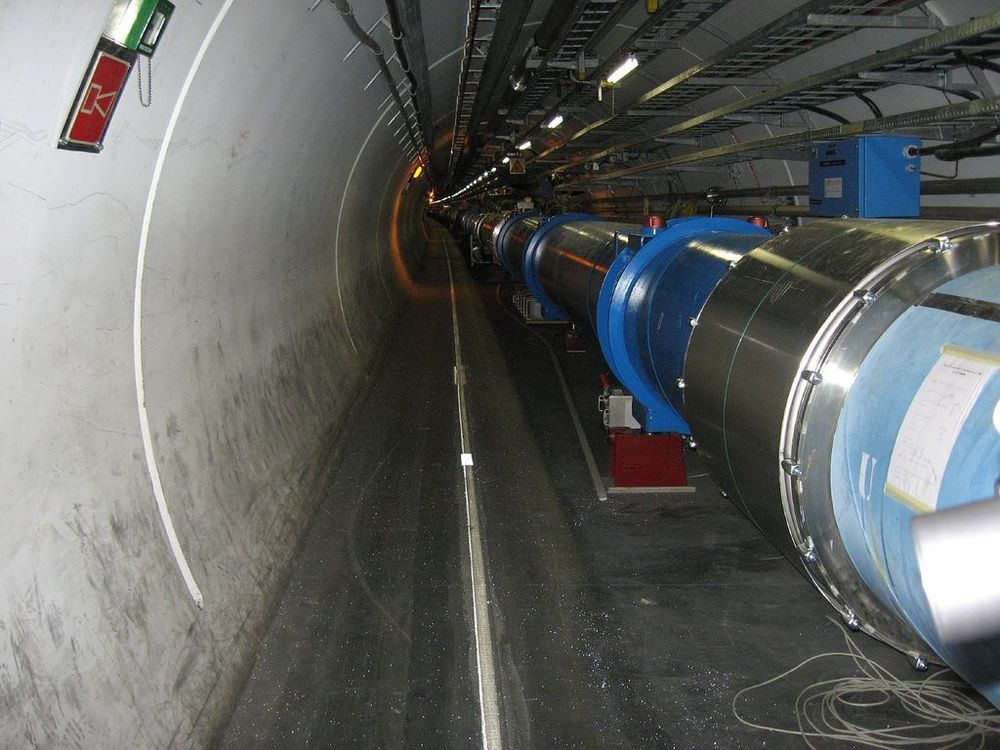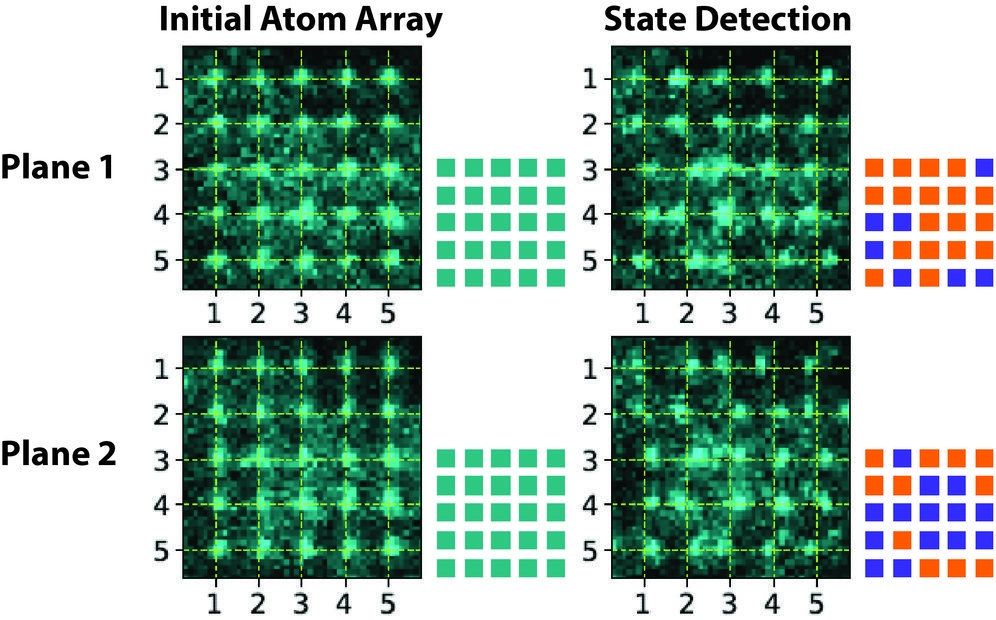Archive for the ‘particle physics’ category: Page 439
Mar 28, 2019
Physicists Discover a Mysterious New Class of Particles Containing Five Quarks
Posted by Genevieve Klien in category: particle physics
Everything you see around you is made up of elementary particles called quarks and leptons, which can combine to form bigger particles such as protons or atoms.
But that doesn’t make them boring – these subatomic particles can also combine in exotic ways we’ve never spotted.
Now CERN’s LHCb collaboration has announced the discovery of a clutch of new particles dubbed “pentaquarks”. The results can help unveil many mysteries of the theory of quarks, a key part of the standard model of particle physics.
Continue reading “Physicists Discover a Mysterious New Class of Particles Containing Five Quarks” »
Mar 27, 2019
Spintronics: Electronics with a spin and “the ultimate potential of graphene”
Posted by Quinn Sena in categories: materials, particle physics
SciTech Europa explores some of the research taking place in the exciting field of spintronics, from spin-orbit coupling to practical spintronic devices.
Mar 27, 2019
Physicists measure quantum tunneling time to be near-instantaneous
Posted by Quinn Sena in categories: particle physics, quantum physics
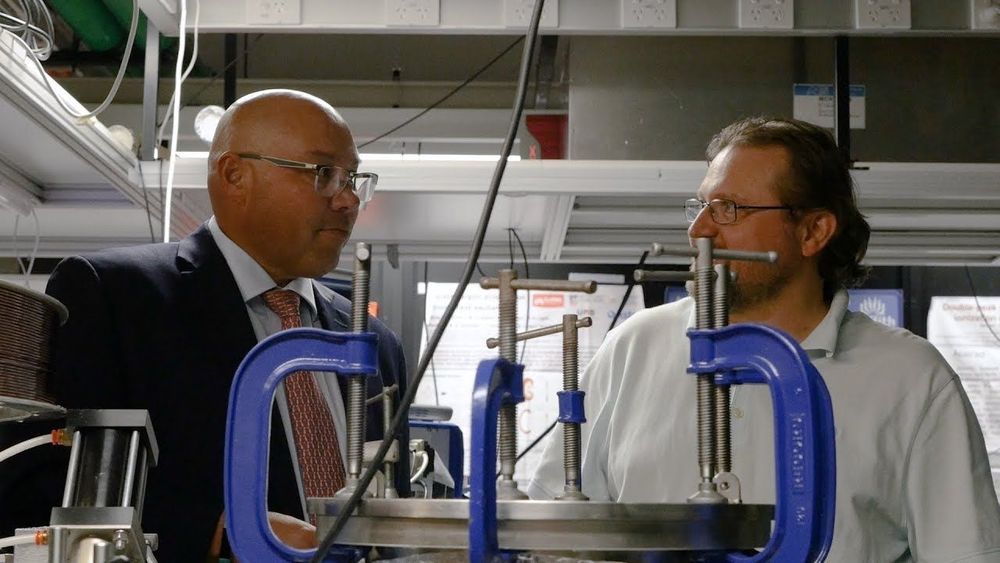
If you throw a ball at a wall, it’s going to bounce back at you – that’s classical physics at work. But of course, the world of quantum physics is much spookier, so if you did the same with a particle, there’s a chance that it will suddenly appear on the other side. This is thanks to a phenomenon known as quantum tunneling, and now a team of physicists has measured just how long that process takes.
Mar 27, 2019
Higgs Boson in Plain English, and Why it’s So Important
Posted by Quinn Sena in category: particle physics
Scientists at CERN have today announced that they’re 99.99% sure that they’ve found a new sub-atomic particle, and that it is likely to be the elusive Higgs boson – often referred to as the “God Particle”. That’s all well and good, but what does it all mean? Let’s break it down…
Mar 27, 2019
This 3D Quantum Gas Clock Could Redefine Time
Posted by Quinn Sena in categories: cosmology, particle physics, quantum physics
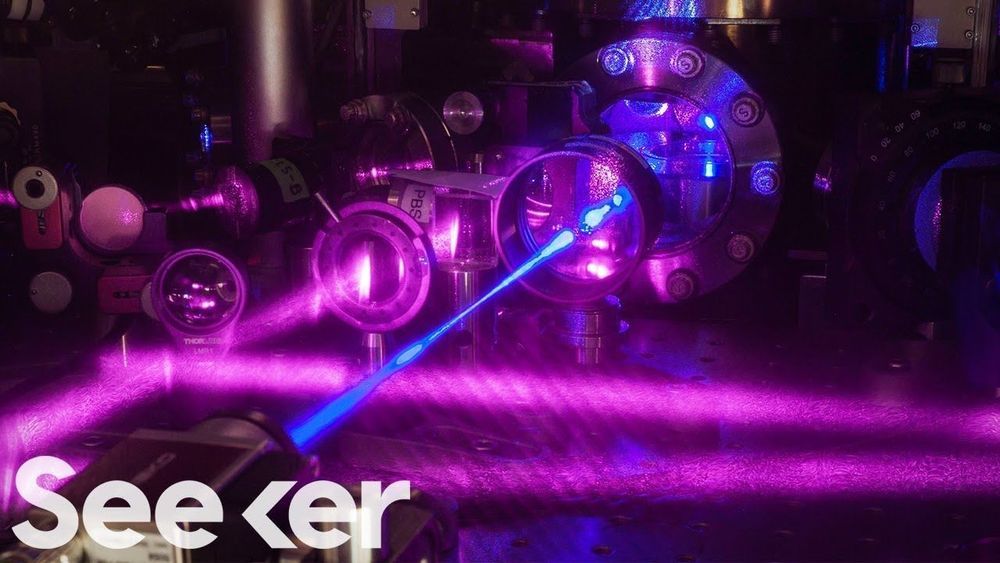
Time may be a human construct but that hasn’t stopped physicists from perfecting it.
JILA’s 3D Quantum Gas Atomic Clock Offers New Dimensions in Measurement
https://www.nist.gov/news-events/news/2017/10/jilas-3-D-quan…easurement
“JILA physicists have created an entirely new design for an atomic clock, in which strontium atoms are packed into a tiny three-dimensional (3D) cube at 1,000 times the density of previous one-dimensional (1-D) clocks. In doing so, they are the first to harness the ultra-controlled behavior of a so-called “quantum gas” to make a practical measurement device.”
Continue reading “This 3D Quantum Gas Clock Could Redefine Time” »
Mar 27, 2019
The Geometry of Particle Physics: Garrett Lisi at TEDxMaui 2013
Posted by Quinn Sena in categories: particle physics, quantum physics
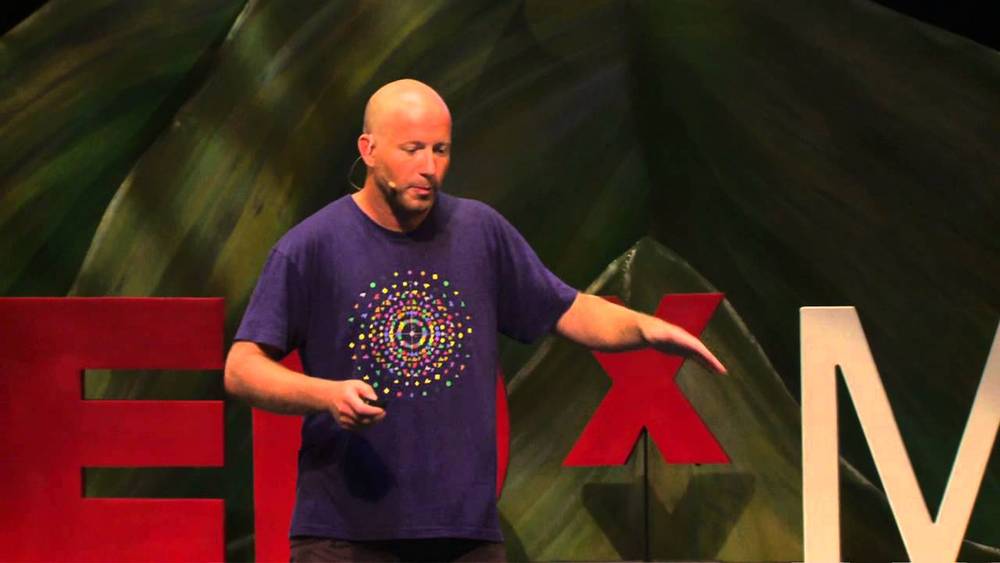
About the Presenter:
After getting his Ph.D. in physics from UC San Diego, Garrett moved to Maui, seeking an optimum balance between surfing and his theoretical research. While pursuing an unanswered question at the heart of Quantum Field Theory, he began to develop what he called “An Exceptionally Simple Theory of Everything,” which proposed a unified field theory combining particle physics and Albert Einstein’s theory of gravitation. His story and work have been featured at TED, in Outside Magazine, The New Yorker, Surfer, and recently in Scientific American.
#FQXiVideoContest2014
Continue reading “The Geometry of Particle Physics: Garrett Lisi at TEDxMaui 2013” »
Mar 27, 2019
Could Black Holes Made Of Light Power Our Spaceships?
Posted by Quinn Sena in categories: cosmology, particle physics, quantum physics, space travel
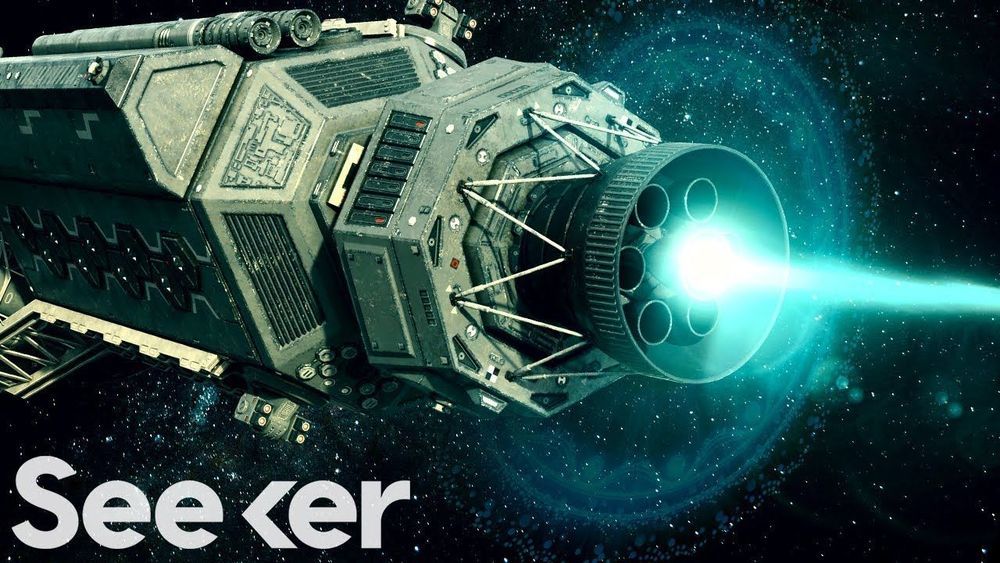
What exactly would it take to create our very own Swartzchild Kugelblitz?
Could a Dyson Sphere Harness the Full Power of the Sun? — https://youtu.be/jOHMQbffrt4
Continue reading “Could Black Holes Made Of Light Power Our Spaceships?” »
Mar 26, 2019
Physicists discover new class of pentaquarks
Posted by Quinn Sena in category: particle physics
Tomasz Skwarnicki, professor of physics in the College of Arts and Sciences at Syracuse University, has uncovered new information about a class of particles called pentaquarks. His findings could lead to a new understanding of the structure of matter in the universe.
Assisted by Liming Zhang, an associate professor at Tsinghua University in Beijing, Skwarnicki has analyzed data from the Large Hadron Collider beauty (LHCb) experiment at CERN’s Large Hadron Collider (LHC) in Switzerland. The experimental physicist has uncovered evidence of three never-before-seen pentaquarks, each divided into two parts.
“Until now, we had thought that a pentaquark was made up of five elementary particles [called quarks], stuck together. Our findings prove otherwise,” says Skwarnicki, a Fellow of the American Physical Society.
Mar 25, 2019
Extremely accurate measurements of atom states for quantum computing
Posted by Genevieve Klien in categories: computing, particle physics, quantum physics
A new method allows the quantum state of atomic “qubits”—the basic unit of information in quantum computers—to be measured with twenty times less error than was previously possible, without losing any atoms. Accurately measuring qubit states, which are analogous to the one or zero states of bits in traditional computing, is a vital step in the development of quantum computers. A paper describing the method by researchers at Penn State appears March 25, 2019 in the journal Nature Physics.
“We are working to develop a quantum computer that uses a three-dimensional array of laser-cooled and trapped cesium atoms as qubits,” said David Weiss, professor of physics at Penn State and the leader of the research team. “Because of how quantum mechanics works, the atomic qubits can exist in a ‘superposition’ of two states, which means they can be, in a sense, in both states simultaneously. To read out the result of a quantum computation, it is necessary to perform a measurement on each atom. Each measurement finds each atom in only one of its two possible states. The relative probability of the two results depends on the superposition state before the measurement.”
To measure qubit states, the team first uses lasers to cool and trap about 160 atoms in a three-dimensional lattice with X, Y, and Z axes. Initially, the lasers trap all of the atoms identically, regardless of their quantum state. The researchers then rotate the polarization of one of the laser beams that creates the X lattice, which spatially shifts atoms in one qubit state to the left and atoms in the other qubit state to the right. If an atom starts in a superposition of the two qubit states, it ends up in a superposition of having moved to the left and having moved to the right. They then switch to an X lattice with a smaller lattice spacing, which tightly traps the atoms in their new superposition of shifted positions. When light is then scattered from each atom to observe where it is, each atom is either found shifted left or shifted right, with a probability that depends on its initial state.
Continue reading “Extremely accurate measurements of atom states for quantum computing” »
